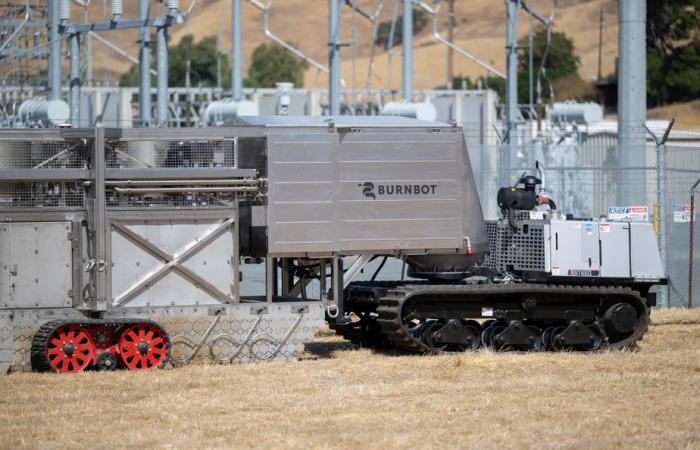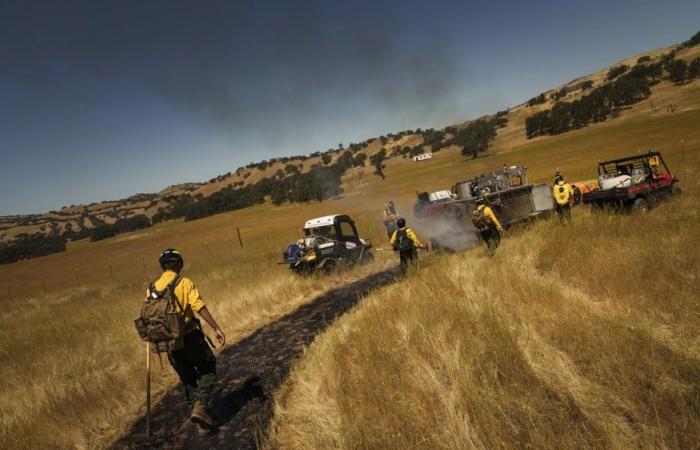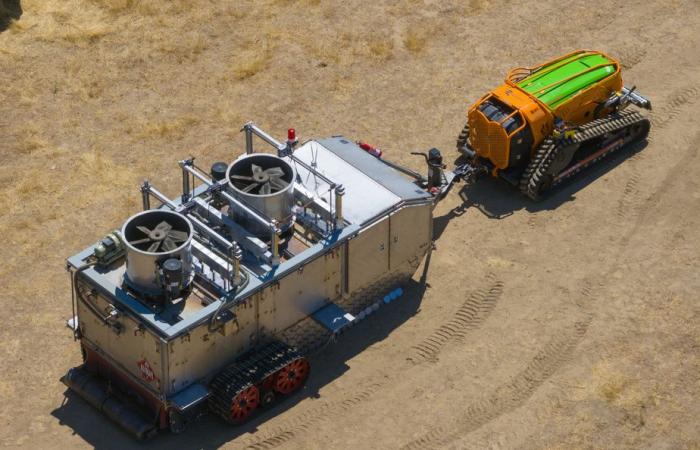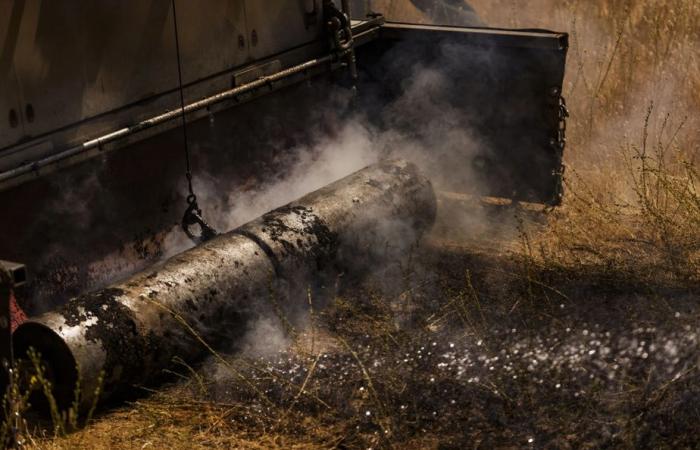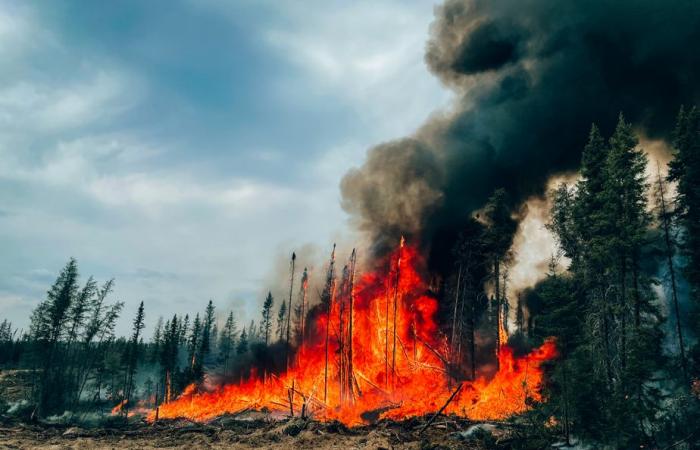Our firefighters could have a major ally to fight forest fires in Canada: a robot. Called BurnBot, this automation was designed to control the trajectory of fires by carrying out controlled burns.
Posted at 1:13 a.m.
Updated at 8:00 a.m.
The colossus imagined in California looks exactly like an assault tank, but without a pilot on board. It is remotely controlled, a bit like a drone.
The robot was noticed last summer, during fire season, along a hiking trail not far from the densely populated area of Palo Alto, a city in Santa Clara County, California. This area of San Francisco, in northern Silicon Valley, is a big target for wildfires. Circling slowly across the rugged territory, the robot successfully transformed everything in its path into a thick trail of blackened ash.
-
PHOTO PROVIDED BY BURNBOT
The robot leaves nothing in its path. It cooks vegetation like an oven, reducing it to blackened ashes.
-

PHOTO PROVIDED BY BURNBOT
The robot is equipped with powerful fans that trap the flames.
-

PHOTO PROVIDED BY BURNBOT
The robot is equipped with a large roller to hit the ground.
1/3
Brushwood, old branches, dry grass or dead leaves: the robot operates like an oven, cooking the vegetation. Its internal temperature reaches up to 1000°C (1832°F). Thanks to fans, the flames and embers are trapped.
This robot is also equipped with a large roller that hits the ground, therefore tackling what the industry calls “zombie fires”, dormant infernos under the ground.
Controlled burns
Whether in the United States, Quebec or elsewhere in Canada, controlled burning at fire sites is not new. This is a planned and intentionally set fire. In the forest, branches, dead wood and flammable debris form the perfect ingredients for a fire. Burning prevents the spread of fire, but this method has its risks.
It requires a lot of labor, often in remote locations. It generates additional flames and produces greenhouse gases (GHG) with their share of fine particles.
The brains behind the American robot, coming into the world in 2022, bring together seasoned forest firefighters, scientists, engineers, forestry and silviculture experts. In interview with The Pressthe media relations manager of the BurnBot group, Merrita Villa, explains that the use of the robot is perfect for meeting the challenge of carrying out “safe” burning, with “minimum smoke”, in addition to requiring “ fewer firefighters” on the ground.
For the moment, the robot is not for sale, but rather for rent. Mme Villa explains that a new generation of the robot, more efficient on uneven terrain, has just been deployed. We call it RX2.
The RX2 carries out controlled burning that releases almost no smoke, 10 times faster than a team of firefighters deployed on the ground, with the tools and the best technologies.
Merrita Villa, BurnBot Group Media Relations Manager
“We plan to deploy it in six American states and with our partners in the Canadian provinces. By 2035, we estimate that the BurnBot will treat more than a million acres each year,” adds Mme Villa.
15 million hectares
In 2023, forest fires will devastate approximately 15 million hectares in Canada, or 6 times the annual average between 2003 and 2012.
Source: Canadian Wildland Fire Information System
Prevent and detect
Professor Stéphane Bilodeau, from the department of bioengineering at McGill University in Montreal, knows the robot. He carried out work in different areas. He is often called upon to comment on the impact of forest fires thanks to his expertise combining engineering, health and the environment.
According to him, robotics is one of the ways of the future to protect forests against fire. He recalls that due to climate change, the area and intensity of forest fires are increasing. In addition, fine particles constitute the second cause of mortality in the world, he emphasizes.
“This year, we have the impression that there were fewer fires because of the record year of 2023. But the fires were of monstrous scale,” points out Stéphane Bilodeau. In Fort McMurray, some zombie fires remained dormant all last winter. »
Our resources on the ground are limited. The combined use of drones, satellites et artificial intelligence (AI) to detect and fight fires is an innovative and promising approach. They can be used to prevent and detect fires.
Stéphane Bilodeau, from the department of bioengineering at McGill University
Prevention and communications coordinator at the Society for the Protection of Forests Against Fire (SOPFEU) of Quebec, Stéphane Caron is not able to confirm or deny whether the organization plans to use the services of BurnBot. SOPFEU uses satellite images to identify hot spots. Drones are used in surveillance rounds, in areas that are difficult to access.

PHOTO FREDÉRIC CHOUINARD, PROVIDED BY SOPFEU
Forest fires in Lebel-sur-Quévillon, June 23, 2023. The ground was worked mechanically to contain the flames.
“We remain on the lookout,” he adds. Many technologies are in development, in particular to detect dormant fires with infrared. For the moment, I cannot tell you if the robot would be adaptable to our forests, our mountains. Our protective coverage territory is different from that in California. »
Visit the BurnBot website (in English)

